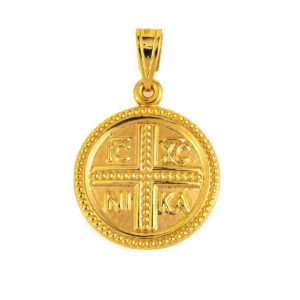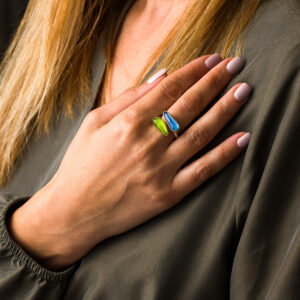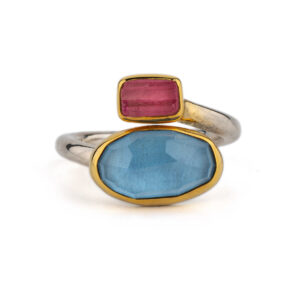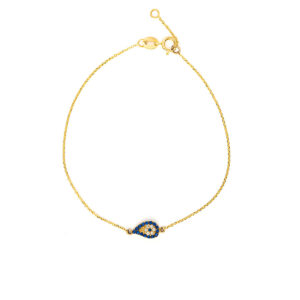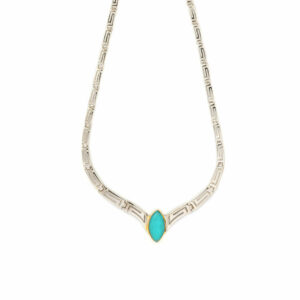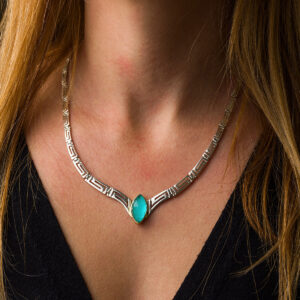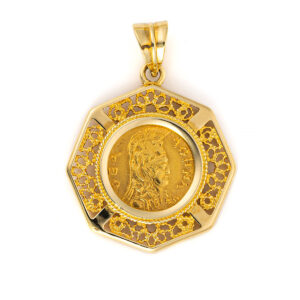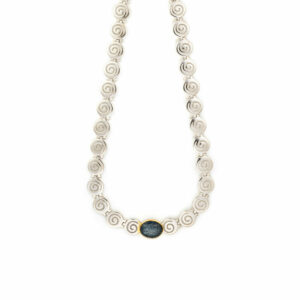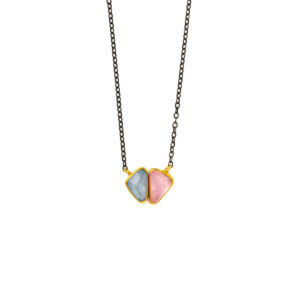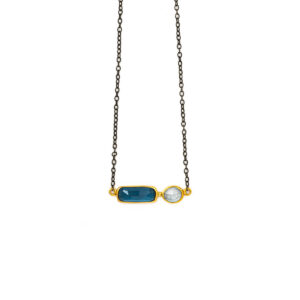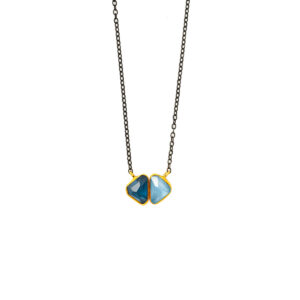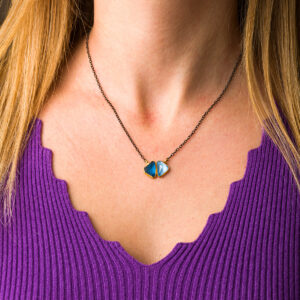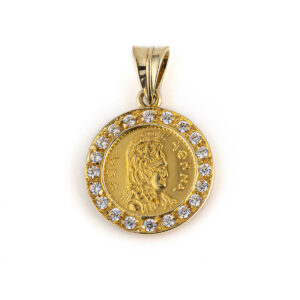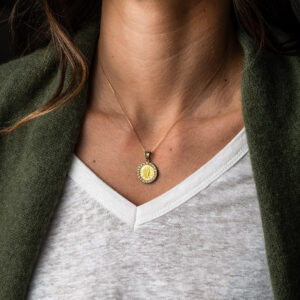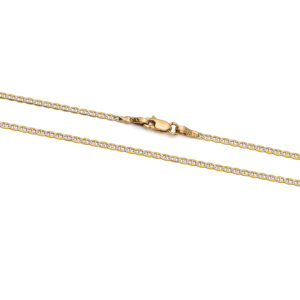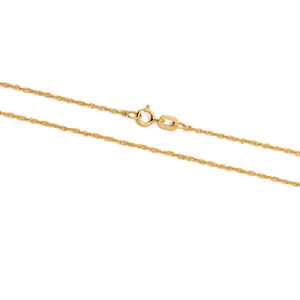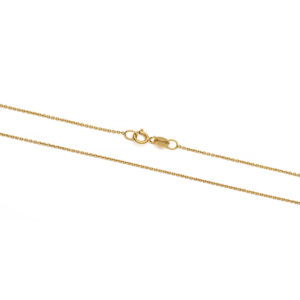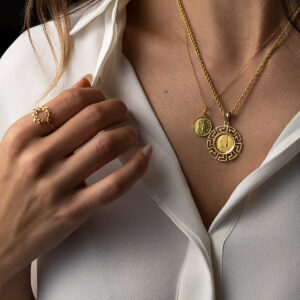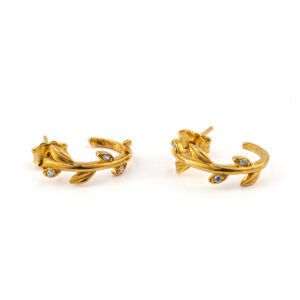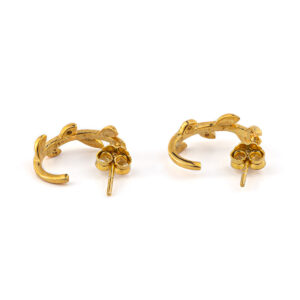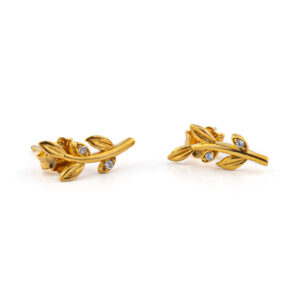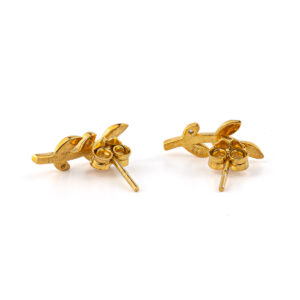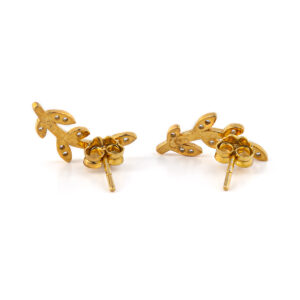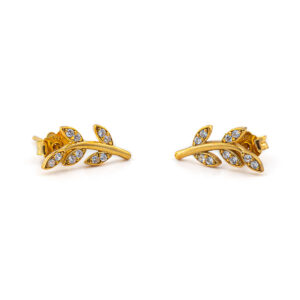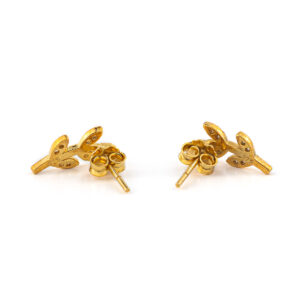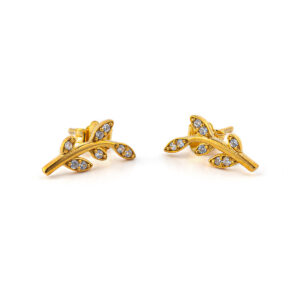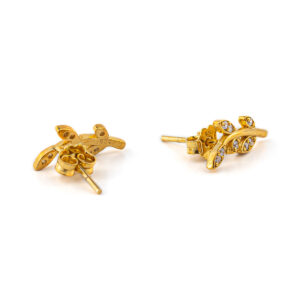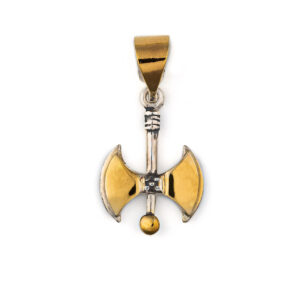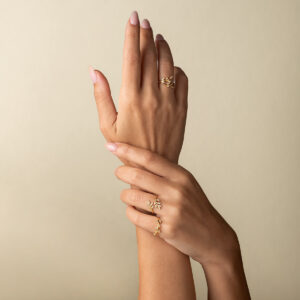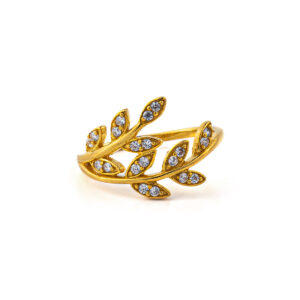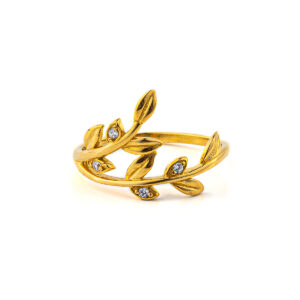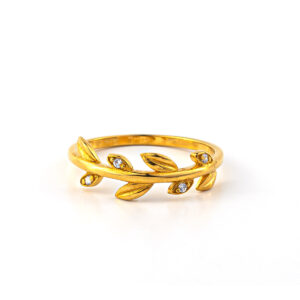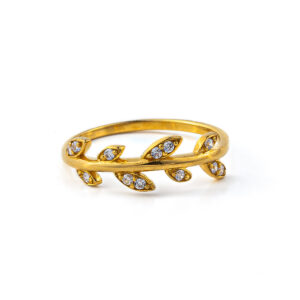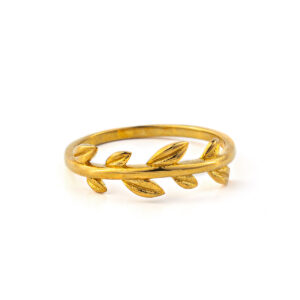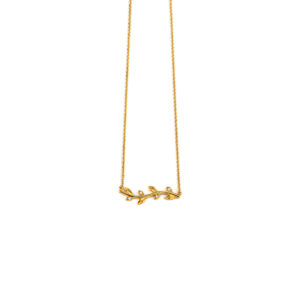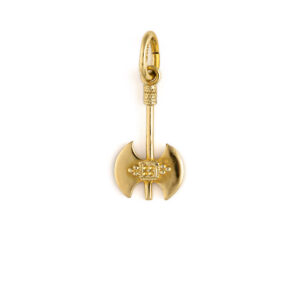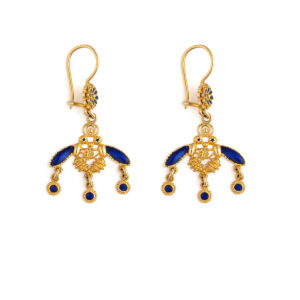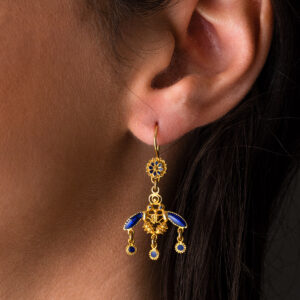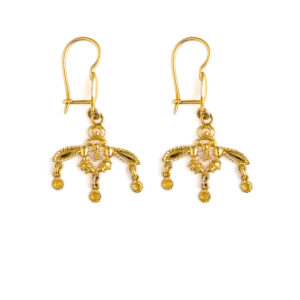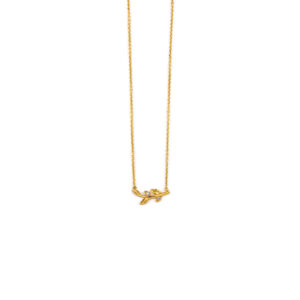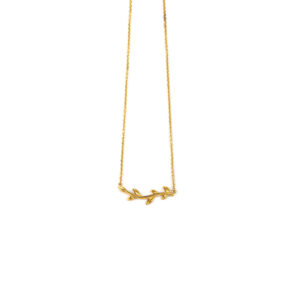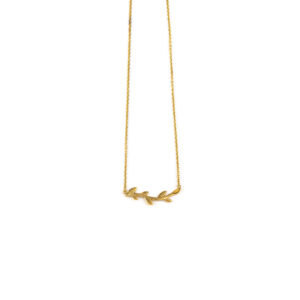Κωνσταντινάτος Σταυρός – Χρυσό 14Κ
220,00€ – 708,00€Κατασκευασμένο από 14Κ χρυσό.
Μενταγιόν που απεικονίζει τους Αγίους Κωνσταντίνο και Ελένη στη μία όψη και Χριστόγραμμα με τα αρχικά IC XC NIKA (ο Ιησούς Χριστός κατακτά) στην άλλη. Είναι ένα μοναδικό μενταγιόν που μπορείτε να το προσφέρετε στους ειδικούς σας ως δώρο προστασίας ή να το αγοράσετε για τον εαυτό σας.
Χειροποίητο ελληνικό κόσμημα.
Δαχτυλίδι Μπλε Τοπάζι και Περίδοτο – Χρυσό 14Κ και Ασήμι 925
680,00€Κατασκευασμένο από 14Κ χρυσό και ασήμι 925. Διακοσμημένο με μπλε τοπάζι και περίδοτο. Χειροποίητο ελληνικό κόσμημα. Όπως σε όλα τα χειροποίητα είδη μπορεί να υπάρχουν μικρές διαφορές σε βάρος και διαστάσεις και αυτό είναι που τα κάνει μοναδικά και πολύτιμα.
Δαχτυλίδι με Σπείρα και Aqua Marine – Χρυσό 18Κ και ασήμι 925
Κατασκευασμένο από 18Κ χρυσό και ασήμι 925.
Διακοσμημένο με Aqua Marine.
Χειροποίητο ελληνικό κόσμημα.
Όπως σε όλα τα χειροποίητα είδη μπορεί να υπάρχουν μικρές διαφορές σε βάρος και διαστάσεις και αυτό είναι που τα κάνει μοναδικά και πολύτιμα.
Δαχτυλίδι Τουρμαλίνη και Aqua Marine – Χρυσό 18Κ και Ασήμι 925
620,00€Κατασκευασμένο από 18Κ χρυσό και ασήμι 925.
Διακοσμημένο με Aqua Marine και Τουρμαλίνη.
Χειροποίητο ελληνικό κόσμημα.
Όπως σε όλα τα χειροποίητα είδη μπορεί να υπάρχουν μικρές διαφορές σε βάρος και διαστάσεις και αυτό είναι που τα κάνει μοναδικά και πολύτιμα.
Κολιέ Μαίανδρος με Αμαζονίτη – Χρυσό 14 Καρατίων και Ασήμι 925
Κολιέ Μέανδρος με Αμαζονίτη σε ασήμι και χρυσό Κ14. Για μοναδικές εμφανίσεις γεμάτες χρώμα! Κάθε κόσμημα της σειράς είναι μοναδικό.
Μενταγιόν Θεά Αθηνά – Χρυσό 14Κ
984,00€Θεά Αθηνά και Κουκουβάγια – Αθηναϊκό ασημένιο τετράδραχμο.
Κατασκευασμένο από 14Κ χρυσό.
Αυτό το νόμισμα ανήκει στα λεγόμενα «αθηναϊκά νομίσματα νέου στυλ» που κόπηκαν μεταξύ 166 και 64 π.Χ. και θεωρείται ένα από τα πιο δημοφιλή αρχαία ελληνικά νομίσματα που απεικονίζουν το πορτρέτο της Θεάς Αθηνάς. Η Αθηνά σχετίζεται με τη σοφία, τη χειροτεχνία και τον πόλεμο. Η Αθηνά θεωρούνταν προστάτιδα διαφόρων πόλεων σε όλη την Ελλάδα, αλλά ιδιαίτερα της Αθήνας, η οποία πήρε το όνομά της από εκείνη. Συνήθως εμφανίζεται στην τέχνη φορώντας κράνος και κρατώντας ένα δόρυ. Τα κύρια σύμβολά της περιλαμβάνουν κουκουβάγιες, ελιές και φίδια. Οι ναοί της βρίσκονταν στην οχυρωμένη Ακρόπολη στο κεντρικό τμήμα της πόλης. Ο Παρθενώνας στην Ακρόπολη της Αθήνας είναι αφιερωμένος σε αυτήν, μαζί με πολλούς άλλους ναούς και μνημεία. Το κύριο πανηγύρι της στην Αθήνα ήταν τα Παναθήναια, τα οποία γιορτάζονταν το καλοκαίρι και ήταν το σημαντικότερο πανηγύρι του αθηναϊκού ημερολογίου. Στο κλασικό Ολύμπιο πάνθεον, η Αθηνά θεωρούνταν η αγαπημένη κόρη του Δία. Η κουκουβάγια συνοδεύει παραδοσιακά την Αθηνά. Λόγω αυτής της συσχέτισης, η κουκουβάγια έχει χρησιμοποιηθεί ως σύμβολο γνώσης και σοφίας. Οι επιγραφές περιέχουν την «εθνική» ονομασία της πόλης («ΑΘΕ», δηλαδή «των Αθηναίων»).
Χειροποίητο ελληνικό κόσμημα.
Κολιέ Σπείρα με Λάπις Λαζούλι – Χρυσό 14 Καρατίων και Ασήμι 925
Κολιέ με Λάπις Λαζούλι σε ασήμι και χρυσό Κ14. Για μοναδικές εμφανίσεις γεμάτες χρώμα! Κάθε κόσμημα της σειράς είναι μοναδικό.
Κολιέ με Ακουαμαρίνα και Ροζ χαλαζία – Χρυσό 18 Καρατίων και Ασήμι 925
580,00€Κολιέ με Ροζ χαλαζία και Ακουαμαρίνα σε ασήμι και χρυσό Κ18. Περιλαμβάνεται ασημένια αλυσίδα μήκους 40cm. Για μοναδικές εμφανίσεις γεμάτες χρώμα! Κάθε κόσμημα της σειράς είναι μοναδικό.
Κολιέ με μπλε τοπάζ και μπριγιάν – Χρυσό 18 Καρατίων και Ασήμι 925
380,00€Κολιέ με μπλε τοπάζ και μπριγιάν σε ασήμι και χρυσό Κ18. Περιλαμβάνεται ασημένια αλυσίδα μήκους 40cm. Για μοναδικές εμφανίσεις γεμάτες χρώμα! Κάθε κόσμημα της σειράς είναι μοναδικό.
Κολιέ με Ροζ χαλαζία και Ακουαμαρίνα – Χρυσό 18 Καρατίων και Ασήμι 925
575,00€Κολιέ με Ροζ χαλαζία και Ακουαμαρίνα σε ασήμι και χρυσό Κ18. Περιλαμβάνεται ασημένια αλυσίδα μήκους 40cm. Για μοναδικές εμφανίσεις γεμάτες χρώμα! Κάθε κόσμημα της σειράς είναι μοναδικό.
Κολιέ με Blue London Τοπάζ και Ακουαμαρίνα – Χρυσό 18 Καρατίων και Ασήμι 925
574,00€Κολιέ με Blue London Τοπάζ και Ακουαμαρίνα σε ασήμι και χρυσό Κ18. Περιλαμβάνεται ασημένια αλυσίδα μήκους 40cm. Για μοναδικές εμφανίσεις γεμάτες χρώμα! Κάθε κόσμημα της σειράς είναι μοναδικό.
Κολιέ με Ακουαμαρίνα και Τοπάζ – Χρυσό 18 Καρατίων και Ασήμι 925
575,00€Κολιέ με τοπάζ και ακουαμαρίνα σε ασήμι και χρυσό Κ18. Περιλαμβάνεται ασημένια αλυσίδα μήκους 40cm. Για μοναδικές εμφανίσεις γεμάτες χρώμα! Κάθε κόσμημα της σειράς είναι μοναδικό.
Goddess Athena and Owl Pendant with Crystals – 14K Solid Gold
835,00€This coins illustrate the portrait of Goddess Athena on the one side and the wisdom owl on the other.
Α beautiful and timeless coin pendant.
Made of 14k gold with crystals.
The chain shown is not included.
Goddess Athena and Owl – Athenian silver tetradrachm.
Dracma was the currency used in Greece during several periods in its history. The tetradrachm was an Ancient Greek silver coin equivalent to fourdrachmae in Athens it replaced the earlier “heraldic” type of didrachms and it was in wide circulation from ca. 510 to ca. 38 BC. This coin belongs to the so-called “new style Athenian coins” minted between 166 and 64 B.C. and is considered one of the most popular ancient Greek coins which illustrate the portrait of Goddess Athena on the one side and the wisdom owl on the other. Athena is an ancient Greek goddess associated with wisdom, handicraft, and warfare. Athena was regarded as the patron and protectress of various cities across Greece, particularly the city of Athens, from which she most likely received her name. She’s usually shown in art wearing a helmet and holding a spear. Her major symbols include owls, olive trees, and snakes. Her temples were located atop the fortified Acropolis in the central part of the city. The Parthenon on the Athenian Acropolis is dedicated to her, along with numerous other temples and monuments. Her main festival in Athens was the Panathenaia, which was celebrated in midsummer and was the most important festival on the Athenian calendar. In the classical Olympian pantheon, Athena was regarded as the favorite daughter of Zeus. The owl traditionally accompanies Athena. Because of such association, the owl has been used as a symbol of knowledge and wisdom. The inscriptions contain the city’s “national” appellation (“ΑΘΕ», i.e. “of the Athenians”).As in all handmade items there may be small differences in weight and dimensions and this is what makes them unique and precious.
Rope Αλυσίδα – 14K Χρυσό
418,00€ – 472,00€Κατασκευασμένη από 14K Χρυσό.
Χειροποίητο Ελληνικό κόσμημα.
Gourmet Thita Αλυσίδα 45cm – 14Κ Χρυσό
365,00€Κατασκευασμένη από 14Κ Χρυσό.
Χειροποίητο Ελληνικό κόσμημα.
Twisted Αλυσίδα – 14Κ Χρυσό
245,00€ – 265,00€Κατασκευασμένη από 14Κ Χρυσό.
Χειροποίητο Ελληνικό κόσμημα.
Λεπτή Cable Αλυσίδα 14Κ Χρυσό
152,00€ – 195,00€Κατασκευασμένη από 14Κ Χρυσό.
Χειροποίητο Ελληνικό κόσμημα.
Σκουλαρίκια Κλαδί – 14Κ Χρυσό με Ζιργκόν
620,00€Earrings inspired by the olive leaf symbol.
Made of 14k gold with zircon.
The olive wreath also known as kotinos was the prize for the winner at the ancient Olympic Games. It was an olive branch, of the wild- olive tree that grew at Olympia,intertwined to form a circle or a horse-shoe. According to Pausanias it was introduced by Heracles as a prize for the running race winner to honour his father Zeus. In the ancient Olympic Games there were no gold, silver, or bronze medals. There was only one winner per event, crowned with an olive wreath made of wild-olive leaves from a sacred tree near the temple of Zeus at Olympia. Olive wreaths were given out during the 2004 Summer Olympics in Athens in honor of the ancient tradition, because the games were being held in Greece.
Σκουλαρίκια Κλαδί – 14Κ Χρυσό με Ζιργκόν
428,00€Earrings inspired by the olive leaf symbol.
Made of 14k gold with zircon.
The olive wreath also known as kotinos was the prize for the winner at the ancient Olympic Games. It was an olive branch, of the wild- olive tree that grew at Olympia,intertwined to form a circle or a horse-shoe. According to Pausanias it was introduced by Heracles as a prize for the running race winner to honour his father Zeus. In the ancient Olympic Games there were no gold, silver, or bronze medals. There was only one winner per event, crowned with an olive wreath made of wild-olive leaves from a sacred tree near the temple of Zeus at Olympia. Olive wreaths were given out during the 2004 Summer Olympics in Athens in honor of the ancient tradition, because the games were being held in Greece.
Σκουλαρίκια Κλαδί – 14Κ Χρυσό με Ζιργκόν
514,00€Earrings inspired by the olive leaf symbol.
Made of 14k gold with zircon.
The olive wreath also known as kotinos was the prize for the winner at the ancient Olympic Games. It was an olive branch, of the wild- olive tree that grew at Olympia,intertwined to form a circle or a horse-shoe. According to Pausanias it was introduced by Heracles as a prize for the running race winner to honour his father Zeus. In the ancient Olympic Games there were no gold, silver, or bronze medals. There was only one winner per event, crowned with an olive wreath made of wild-olive leaves from a sacred tree near the temple of Zeus at Olympia. Olive wreaths were given out during the 2004 Summer Olympics in Athens in honor of the ancient tradition, because the games were being held in Greece.
Σκουλαρίκια Κλαδί – 14Κ Χρυσό με Ζιργκόν
568,00€Earrings inspired by the olive leaf symbol.
Made of 14k gold with zircon.
The olive wreath also known as kotinos was the prize for the winner at the ancient Olympic Games. It was an olive branch, of the wild- olive tree that grew at Olympia,intertwined to form a circle or a horse-shoe. According to Pausanias it was introduced by Heracles as a prize for the running race winner to honour his father Zeus. In the ancient Olympic Games there were no gold, silver, or bronze medals. There was only one winner per event, crowned with an olive wreath made of wild-olive leaves from a sacred tree near the temple of Zeus at Olympia. Olive wreaths were given out during the 2004 Summer Olympics in Athens in honor of the ancient tradition, because the games were being held in Greece.
Σκουλαρίκια Κλαδί – 14Κ Χρυσό με Ζιργκόν
428,00€Earrings inspired by the olive leaf symbol.
Made of 14k gold with zircon.
The olive wreath also known as kotinos was the prize for the winner at the ancient Olympic Games. It was an olive branch, of the wild- olive tree that grew at Olympia,intertwined to form a circle or a horse-shoe. According to Pausanias it was introduced by Heracles as a prize for the running race winner to honour his father Zeus. In the ancient Olympic Games there were no gold, silver, or bronze medals. There was only one winner per event, crowned with an olive wreath made of wild-olive leaves from a sacred tree near the temple of Zeus at Olympia. Olive wreaths were given out during the 2004 Summer Olympics in Athens in honor of the ancient tradition, because the games were being held in Greece.
Μενταγιόν Τσεκούρι – Χρυσό 14Κ και Ασήμι 925
Κατασκευασμένο από Aσήμι 925 και Χρυσό 14Κ.
Χειροποίητο ελληνικό κόσμημα.
Δαχτυλίδι Κλαδί – 14Κ Χρυσό με Ζιργκόν
582,00€Ring inspired by the olive leaf symbol.
Made of 14k gold with zircon.
The olive wreath also known as kotinos was the prize for the winner at the ancient Olympic Games. It was an olive branch, of the wild- olive tree that grew at Olympia,intertwined to form a circle or a horse-shoe. According to Pausanias it was introduced by Heracles as a prize for the running race winner to honour his father Zeus. In the ancient Olympic Games there were no gold, silver, or bronze medals. There was only one winner per event, crowned with an olive wreath made of wild-olive leaves from a sacred tree near the temple of Zeus at Olympia. Olive wreaths were given out during the 2004 Summer Olympics in Athens in honor of the ancient tradition, because the games were being held in Greece.
Δαχτυλίδι Κλαδί – 14Κ Χρυσό με Ζιργκόν
528,00€Ring inspired by the olive leaf symbol.
Made of 14k gold with zircon.
The olive wreath also known as kotinos was the prize for the winner at the ancient Olympic Games. It was an olive branch, of the wild- olive tree that grew at Olympia,intertwined to form a circle or a horse-shoe. According to Pausanias it was introduced by Heracles as a prize for the running race winner to honour his father Zeus. In the ancient Olympic Games there were no gold, silver, or bronze medals. There was only one winner per event, crowned with an olive wreath made of wild-olive leaves from a sacred tree near the temple of Zeus at Olympia. Olive wreaths were given out during the 2004 Summer Olympics in Athens in honor of the ancient tradition, because the games were being held in Greece.
Δαχτυλίδι Κλαδί – 18Κ Χρυσό
756,00€Ring inspired by the olive leaf symbol.
Made of 18k gold.
The olive wreath also known as kotinos was the prize for the winner at the ancient Olympic Games. It was an olive branch, of the wild- olive tree that grew at Olympia,intertwined to form a circle or a horse-shoe. According to Pausanias it was introduced by Heracles as a prize for the running race winner to honour his father Zeus. In the ancient Olympic Games there were no gold, silver, or bronze medals. There was only one winner per event, crowned with an olive wreath made of wild-olive leaves from a sacred tree near the temple of Zeus at Olympia. Olive wreaths were given out during the 2004 Summer Olympics in Athens in honor of the ancient tradition, because the games were being held in Greece.
Δαχτυλίδι Κλαδί – 14Κ Χρυσό
560,00€Ring inspired by the olive leaf symbol.
Made of 14k gold.
The olive wreath also known as kotinos was the prize for the winner at the ancient Olympic Games. It was an olive branch, of the wild- olive tree that grew at Olympia,intertwined to form a circle or a horse-shoe. According to Pausanias it was introduced by Heracles as a prize for the running race winner to honour his father Zeus. In the ancient Olympic Games there were no gold, silver, or bronze medals. There was only one winner per event, crowned with an olive wreath made of wild-olive leaves from a sacred tree near the temple of Zeus at Olympia. Olive wreaths were given out during the 2004 Summer Olympics in Athens in honor of the ancient tradition, because the games were being held in Greece.
Δαχτυλίδι Κλαδί – 14Κ Χρυσό με Ζιργκόν
602,00€Ring inspired by the olive leaf symbol.
Made of 14k gold with zircon.
The olive wreath also known as kotinos was the prize for the winner at the ancient Olympic Games. It was an olive branch, of the wild- olive tree that grew at Olympia,intertwined to form a circle or a horse-shoe. According to Pausanias it was introduced by Heracles as a prize for the running race winner to honour his father Zeus. In the ancient Olympic Games there were no gold, silver, or bronze medals. There was only one winner per event, crowned with an olive wreath made of wild-olive leaves from a sacred tree near the temple of Zeus at Olympia. Olive wreaths were given out during the 2004 Summer Olympics in Athens in honor of the ancient tradition, because the games were being held in Greece.
Δαχτυλίδι Κλαδί – 18Κ Χρυσό
680,00€Ring inspired by the olive leaf symbol.
Made of 18k gold.
The olive wreath also known as kotinos was the prize for the winner at the ancient Olympic Games. It was an olive branch, of the wild- olive tree that grew at Olympia,intertwined to form a circle or a horse-shoe. According to Pausanias it was introduced by Heracles as a prize for the running race winner to honour his father Zeus. In the ancient Olympic Games there were no gold, silver, or bronze medals. There was only one winner per event, crowned with an olive wreath made of wild-olive leaves from a sacred tree near the temple of Zeus at Olympia. Olive wreaths were given out during the 2004 Summer Olympics in Athens in honor of the ancient tradition, because the games were being held in Greece.
Δαχτυλίδι Κλαδί – 14Κ Χρυσό
514,00€Ring inspired by the olive leaf symbol.
Made of 14k gold.
The olive wreath also known as kotinos was the prize for the winner at the ancient Olympic Games. It was an olive branch, of the wild- olive tree that grew at Olympia,intertwined to form a circle or a horse-shoe. According to Pausanias it was introduced by Heracles as a prize for the running race winner to honour his father Zeus. In the ancient Olympic Games there were no gold, silver, or bronze medals. There was only one winner per event, crowned with an olive wreath made of wild-olive leaves from a sacred tree near the temple of Zeus at Olympia. Olive wreaths were given out during the 2004 Summer Olympics in Athens in honor of the ancient tradition, because the games were being held in Greece.
Δαχτυλίδι Κλαδί – 14Κ Χρυσό με Ζιργκόν
578,00€Ring inspired by the olive leaf symbol.
Made of 14k gold with zircon.
The olive wreath also known as kotinos was the prize for the winner at the ancient Olympic Games. It was an olive branch, of the wild- olive tree that grew at Olympia,intertwined to form a circle or a horse-shoe. According to Pausanias it was introduced by Heracles as a prize for the running race winner to honour his father Zeus. In the ancient Olympic Games there were no gold, silver, or bronze medals. There was only one winner per event, crowned with an olive wreath made of wild-olive leaves from a sacred tree near the temple of Zeus at Olympia. Olive wreaths were given out during the 2004 Summer Olympics in Athens in honor of the ancient tradition, because the games were being held in Greece.
Δαχτυλίδι Κλαδί – 14Κ Χρυσό με Ζιργκόν
494,00€Ring inspired by the olive leaf symbol.
Made of 14k gold with zircon.
The olive wreath also known as kotinos was the prize for the winner at the ancient Olympic Games. It was an olive branch, of the wild- olive tree that grew at Olympia,intertwined to form a circle or a horse-shoe. According to Pausanias it was introduced by Heracles as a prize for the running race winner to honour his father Zeus. In the ancient Olympic Games there were no gold, silver, or bronze medals. There was only one winner per event, crowned with an olive wreath made of wild-olive leaves from a sacred tree near the temple of Zeus at Olympia. Olive wreaths were given out during the 2004 Summer Olympics in Athens in honor of the ancient tradition, because the games were being held in Greece.
Δαχτυλίδι Κλαδί – 14Κ Χρυσό με Ζιργκόν
418,00€Ring inspired by the olive leaf symbol.
Made of 14k gold with zircon.
The olive wreath also known as kotinos was the prize for the winner at the ancient Olympic Games. It was an olive branch, of the wild- olive tree that grew at Olympia,intertwined to form a circle or a horse-shoe. According to Pausanias it was introduced by Heracles as a prize for the running race winner to honour his father Zeus. In the ancient Olympic Games there were no gold, silver, or bronze medals. There was only one winner per event, crowned with an olive wreath made of wild-olive leaves from a sacred tree near the temple of Zeus at Olympia. Olive wreaths were given out during the 2004 Summer Olympics in Athens in honor of the ancient tradition, because the games were being held in Greece.
Δαχτυλίδι Κλαδί – 14Κ Χρυσό με Ζιργκόν
418,00€Ring inspired by the olive leaf symbol.
Made of 14k gold with zircon.
The olive wreath also known as kotinos was the prize for the winner at the ancient Olympic Games. It was an olive branch, of the wild- olive tree that grew at Olympia,intertwined to form a circle or a horse-shoe. According to Pausanias it was introduced by Heracles as a prize for the running race winner to honour his father Zeus. In the ancient Olympic Games there were no gold, silver, or bronze medals. There was only one winner per event, crowned with an olive wreath made of wild-olive leaves from a sacred tree near the temple of Zeus at Olympia. Olive wreaths were given out during the 2004 Summer Olympics in Athens in honor of the ancient tradition, because the games were being held in Greece.
Δαχτυλίδι Κλαδί – 18Κ Χρυσό
554,00€Ring inspired by the olive leaf symbol.
Made of 18k gold.
The olive wreath also known as kotinos was the prize for the winner at the ancient Olympic Games. It was an olive branch, of the wild- olive tree that grew at Olympia,intertwined to form a circle or a horse-shoe. According to Pausanias it was introduced by Heracles as a prize for the running race winner to honour his father Zeus. In the ancient Olympic Games there were no gold, silver, or bronze medals. There was only one winner per event, crowned with an olive wreath made of wild-olive leaves from a sacred tree near the temple of Zeus at Olympia. Olive wreaths were given out during the 2004 Summer Olympics in Athens in honor of the ancient tradition, because the games were being held in Greece.
Δαχτυλίδι Κλαδί – 14Κ Χρυσό
395,00€Ring inspired by the olive leaf symbol.
Made of 14k gold.
The olive wreath also known as kotinos was the prize for the winner at the ancient Olympic Games. It was an olive branch, of the wild- olive tree that grew at Olympia,intertwined to form a circle or a horse-shoe. According to Pausanias it was introduced by Heracles as a prize for the running race winner to honour his father Zeus. In the ancient Olympic Games there were no gold, silver, or bronze medals. There was only one winner per event, crowned with an olive wreath made of wild-olive leaves from a sacred tree near the temple of Zeus at Olympia. Olive wreaths were given out during the 2004 Summer Olympics in Athens in honor of the ancient tradition, because the games were being held in Greece.
Κολιέ Κλαδί – 14Κ Χρυσό με Ζιργκόν
475,00€Made in 14K gold with zircon.
A necklace inspired from the olive branch, a symbol of peace, abundance and achievement.
Handmade item.
Κολιέ Κλαδί – 14Κ Χρυσό με Ζιργκόν
492,00€Made in 14K gold with zircon.
A necklace inspired from the olive branch, a symbol of peace, abundance and achievement.
Handmade item.
Minoan Bees Earrings – 14K Gold and 925 Sterling Silver
The Minoan Bees Pendant, one of the most famous Minoan artworks, was discovered in the Old Palace cemetery at Chrysolakkos, outside the palace of Malia, the third largest and most significant known Minoan palace after Knossos and Phaistos. Chryssolakkos means the “Pit of gold” because of the many precious objects that were found there. The famous pendant dates back to the Bronze Age, (1800 BC) and it’s an stunning, very detailed representation of two bees or wasps storing away a drop of honey to their honeycomb. This pendant is one of the most famous exhibits in the wonderfully Heraklion archeological museum.
Made of 14K Gold and 925 Sterling Silver
Handmade item.
Κολιέ Αλυσίδα από Κίτρινο Χρυσό 14 Καρατίων Σταυρός με Σμάλτο και Μαργαριτάρι
257,00€Κολιέ Αλυσίδα από Κίτρινο Χρυσό 14 Καρατίων Σταυρός με Σμάλτο και Μαργαριτάρι
Minoan Double Axe Pendant – 14K Yellow Gold
214,00€ – 344,00€Pendant inspired by the Minoan double axe, known as labrys.
Made of 14K Gold.
Handmade item.
The chain shown is our 14K Gold Chain in Length 40cm (not included).
Explore Heritage Collection
Labrys is, according to Plutarch, Minoan word for the double headed axe called in Greek πέλεκυς (pélekus). In ancient Crete, the double axe was an important sacred symbol of the Minoan religion. In Crete it never accompanies male gods, but always female goddesses. It seems that it associated with the worship of Mother Earth or Great Goddess.
As in all handmade items there may be small differences in weight and dimensions and this is what makes them unique and precious.
Μενταγιόν Τσεκούρι – Χρυσό 14Κ
214,00€ – 322,00€Κατασκευασμένο από Χρυσό 14Κ.
Χειροποίητο ελληνικό κόσμημα.
Minoan Malia Bees Dangle Earrings – 18K Solid Yellow Gold and enamel
1.134,00€Dangle earrings inspired by the ancient Minoan Greek Malia bees pendant.
Made of 18K Gold.
Handmade item.
The Minoan Bees Pendant, one of the most famous Minoan artworks, was discovered in the Old Palace cemetery at Chrysolakkos, outside the palace of Malia, the third largest and most significant known Minoan palace after Knossos and Phaistos. Chryssolakkos means the “Pit of gold” because of the many precious objects that were found there. The famous pendant dates back to the Bronze Age, (1800 BC) and it’s an stunning, very detailed representation of two bees or wasps storing away a drop of honey to their honeycomb. This pendant is one of the most famous exhibits in the wonderfully Heraklion archeological museum.
As in all handmade items there may be small differences in weight and dimensions and this is what makes them unique and precious.
Minoan Malia Bees Dangle Earrings – 14K Solid Yellow Gold
684,00€Dangle earrings inspired by the ancient Minoan Greek Malia bees pendant.
Made of 14K Gold.
Handmade item.
The Minoan Bees Pendant, one of the most famous Minoan artworks, was discovered in the Old Palace cemetery at Chrysolakkos, outside the palace of Malia, the third largest and most significant known Minoan palace after Knossos and Phaistos. Chryssolakkos means the “Pit of gold” because of the many precious objects that were found there. The famous pendant dates back to the Bronze Age, (1800 BC) and it’s an stunning, very detailed representation of two bees or wasps storing away a drop of honey to their honeycomb. This pendant is one of the most famous exhibits in the wonderfully Heraklion archeological museum.
As in all handmade items there may be small differences in weight and dimensions and this is what makes them unique and precious.
Goddess Athena Dangle Earrings – 14K Gold
1.006,00€Α beautiful and elegant pair of earrings with Goddess Athena.
Made of 14K Gold.
Handmade item.
Goddess Athena and Owl – Athenian silver tetradrachm
Dracma was the currency used in Greece during several periods in its history.
The tetradrachm was an Ancient Greek silver coin equivalent to fourdrachmae in Athens it replaced the earlier “heraldic” type of didrachms and it was in wide circulation from ca. 510 to ca. 38 BC.
This coin belongs to the so-called “new style Athenian coins” minted between 166 and 64 B.C. and is considered one of the most popular ancient Greek coins which illustrate the portrait of Goddess Athena. Athena is an ancient Greek goddess associated with wisdom, handicraft, and warfare.
Athena was regarded as the patron and protectress of various cities across Greece, particularly the city of Athens, from which she most likely received her name. She’s usually shown in art wearing a helmet and holding a spear. Her major symbols include owls, olive trees, and snakes. Her temples were located atop the fortified Acropolis in the central part of the city. The Parthenon on the Athenian Acropolis is dedicated to her, along with numerous other temples and monuments. Her main festival in Athens was the Panathenaia, which was celebrated in midsummer and was the most important festival on the Athenian calendar.
In the classical Olympian pantheon, Athena was regarded as the favorite daughter of Zeus. The owl traditionally accompanies Athena. Because of such association, the owl has been used as a symbol of knowledge and wisdom. The inscriptions contain the city’s “national” appellation (“ΑΘΕ», i.e. “of the Athenians”).
As in all handmade items there may be small differences in weight and dimensions and this is what makes them unique and precious.
Κολιέ Κλαδί – 14Κ Χρυσό με Ζιργκόν
364,00€Made in 14K gold with zircon.
A necklace inspired from the olive branch, a symbol of peace, abundance and achievement.
Handmade item.
Κολιέ Κλαδί – 18Κ Χρυσό με Διαμάντια
554,00€Made of 18K gold.
A necklace inspired from the olive branch, a symbol of peace, abundance and achievement.
Handmade item.

